51 F. high in the Twin Cities yesterday.
71 F. average high on May 20.
76 F. high on May 20, 2016.
May 21, 1960: A downpour at New Prague dumps 10 inches of rain in a 48 hour period.
Meteorologist or Reluctant Weather Therapist?
I went to a wedding yesterday. Everything about it was beautiful. Except the weather. Man, did I get an earful. "I didn't think you'd show up!" Nice to see you too. "Can't you stop the rain, Paul?" Yes, but it's really expensive.
Why do people blame meteorologists for weather they don't like? Where does this pathology originate?
Saturday's monsoon (Tropical Storm Betty?) forced me to become a reluctant weather therapist. "At least it's not snow!" and "Hey, no drought this summer!" I sputtered, to no avail. When the Minnesota Wild lost were sports anchors blamed? Are reporters heckled when the news is bad? It's all a little bizarre...
Springs are trending wetter across Minnesota and yesterday was Exhibit A. Last week may have been the wettest 7-day stretch of 2017 with 3-5 inch rains; over 7 inches in a few spots.
No more super-soakers, but spotty showers pop up today into Tuesday, followed by a warming trend. 70s will feel like a revelation by late week. A few T-showers may sprout Friday & Saturday, but a drier sky should return for Sunday and Memorial Day.
It's a holiday weekend - what can possibly go wrong?
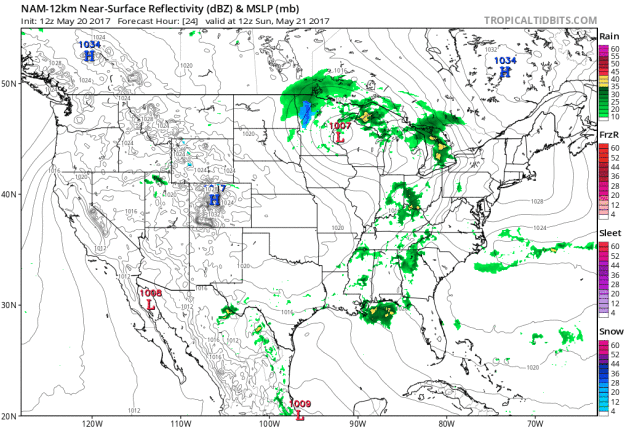
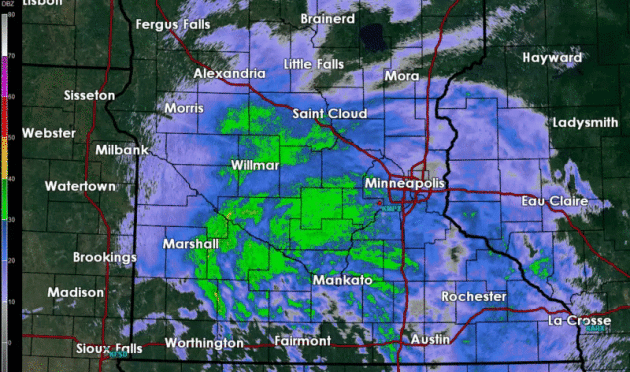
May 15; 4.94" at Altura (Winona County), 3.43" at Elgin (Olmsted County), 2.96" at Hokah (Houston County)2.25" at Owatonna (Steele County), 2.00" at La Crescent (Winona County), and 1.70" at Rosemount (Dakota County)
May 16: 1.95" at Red Wing Dam, and 1.40" at Duluth
May 17: 2.55" at Jordan (Scott County), 2.45" at Dawson (Lac Qui Parle County), 1.95" at Minnesota City (Winona County), and 1.90" at Montevideo (Lac Qui Parle County)
Many other observers reported total amounts of rainfall this week that exceeded 3 inches. The heavy rains brought a halt to planting of crops around the state, although corn planting is close to being finished, and soybean planting is more than half done. Over 40 climate stations in Minnesota have already seen about normal May rainfall amounts, and that is just for the first 18 days of the month..."
File radar imagery from Saturday morning.
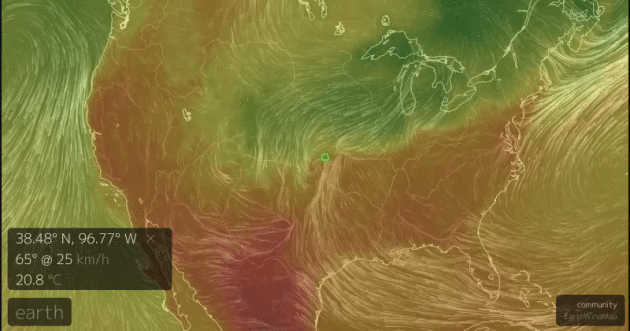
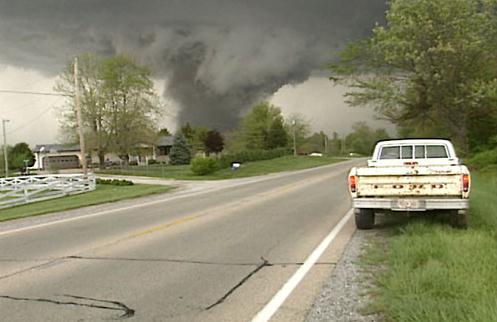
– Leave your car and find shelter.
– Never try to outrun a tornado. Your car will not protect you from the twister.
– Find shelter inside. A basement is safest. Closets or small interior rooms are also good. Cover yourself with a mattress and stay away from windows.
– Do not take shelter in a mobile home. They offer very little protection.
– A “Tornado Warning” means a tornado is developing or is actually on the ground. A “Tornado Watch” means conditions are favorable for the development of severe storms that may create tornadoes.
– Wet roads mean poor traction. Conditions are the most dangerous during the first 10 minutes of a heavy downpour as oil and debris wash away. Driving on wet roads in the rain is comparable to driving on ice. Go slow. Allow extra time.."
5 Questions About Tornadoes. Phys.org has a post that answers some of the most common queries: "...Even if the environment is extremely favorable for supercell tornadoes, forecasters have limited ability to say when or if a specific storm will produce a tornado. Researchers are studying triggers for tornado production, such as small-scale downdraft surges and descending precipitation shafts of a supercell storm's rear flank, and processes that sustain tornadoes once they form. We don't understand tornado maintenance well, or how tornadoes might be affected by interactions with obstacles such as terrain and buildings. This means that when a tornado is occurring, forecasters have limited ability to tell the public how long they expect it to last..."
Graphic credit: "Scientists' present understanding of how a tornado develops in a supercell thunderstorm." Credit: Paul Markowski.
Scientists’ present understanding of how a tornado develops in a supercell thunderstorm. Credit: Paul Markowski
Read more at: https://phys.org/news/2017-05-tornadoes.html#jCp
Read more at: https://phys.org/news/2017-05-tornadoes.html#jCp
Even
if the environment is extremely favorable for supercell tornadoes,
forecasters have limited ability to say when or if a specific storm will
produce a tornado. Researchers are studying triggers for tornado
production, such as small-scale downdraft surges and descending
precipitation shafts on a supercell storm's rear flank, and processes
that sustain tornadoes once they form.
We don't understand tornado maintenance well, or how tornadoes might be affected by interactions with obstacles such as terrain and buildings. This means that when a tornado is occurring, forecasters have limited ability to tell the public how long they expect it to last.
Read more at: https://phys.org/news/2017-05-tornadoes.html#jCp
We don't understand tornado maintenance well, or how tornadoes might be affected by interactions with obstacles such as terrain and buildings. This means that when a tornado is occurring, forecasters have limited ability to tell the public how long they expect it to last.
Read more at: https://phys.org/news/2017-05-tornadoes.html#jCp
Even
if the environment is extremely favorable for supercell tornadoes,
forecasters have limited ability to say when or if a specific storm will
produce a tornado. Researchers are studying triggers for tornado
production, such as small-scale downdraft surges and descending
precipitation shafts on a supercell storm's rear flank, and processes
that sustain tornadoes once they form.
We don't understand tornado maintenance well, or how tornadoes might be affected by interactions with obstacles such as terrain and buildings. This means that when a tornado is occurring, forecasters have limited ability to tell the public how long they expect it to last.
Read more at: https://phys.org/news/2017-05-tornadoes.html#jCp
We don't understand tornado maintenance well, or how tornadoes might be affected by interactions with obstacles such as terrain and buildings. This means that when a tornado is occurring, forecasters have limited ability to tell the public how long they expect it to last.
Read more at: https://phys.org/news/2017-05-tornadoes.html#jCp
Even
if the environment is extremely favorable for supercell tornadoes,
forecasters have limited ability to say when or if a specific storm will
produce a tornado. Researchers are studying triggers for tornado
production, such as small-scale downdraft surges and descending
precipitation shafts on a supercell storm's rear flank, and processes
that sustain tornadoes once they form.
We don't understand tornado maintenance well, or how tornadoes might be affected by interactions with obstacles such as terrain and buildings. This means that when a tornado is occurring, forecasters have limited ability to tell the public how long they expect it to last.
Read more at: https://phys.org/news/2017-05-tornadoes.html#jCp
We don't understand tornado maintenance well, or how tornadoes might be affected by interactions with obstacles such as terrain and buildings. This means that when a tornado is occurring, forecasters have limited ability to tell the public how long they expect it to last.
Read more at: https://phys.org/news/2017-05-tornadoes.html#jCp
Early Heat Wave Broke Records Across the Eastern USA. Mid to upper 90s in May is hardly unprecedented. A taste of the summer to come? Stay tuned. Here's an excerpt from The Associated Press: "Heat
records were burning up Thursday in cities in the Northeast as the
region gets a summer preview. The mercury reached 92 degrees in Boston
shortly after noon Thursday, breaking the old record of 91 degrees for
May 18 set in 1936, according to the National Weather Service. The
81-year-old record for the day of 90 degrees also fell in New York City,
where it was still 91 degrees in Central Park shortly before 4 p.m. It
was the second straight day of midsummer-like conditions in the
Northeast, though forecasters said a cooling trend would move in Friday
and return the region to more seasonable conditions..."
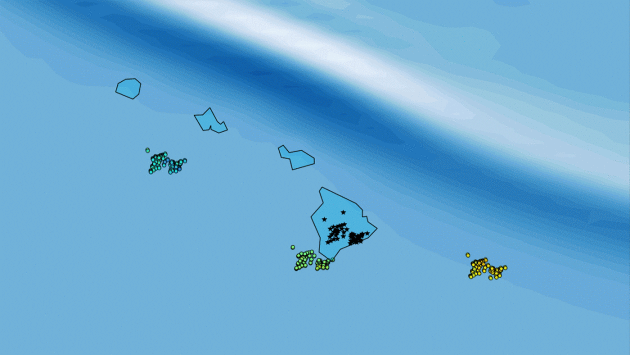
Scientists Look to Skies to Improve Tsunami Detection. Here's a snippet from an interesting NASA story: "A
team of scientists from Sapienza University in Rome, Italy, and NASA’s
Jet Propulsion Laboratory in Pasadena, California, has developed a new
approach to assist in the ongoing development of timely tsunami
detection systems, based upon measurements of how tsunamis disturb a
part of Earth’s atmosphere. The new approach, called Variometric
Approach for Real-time Ionosphere Observation, or VARION, uses
observations from GPS and other global navigation satellite systems
(GNSS) to detect, in real time, disturbances in Earth’s ionosphere
associated with a tsunami. The ionosphere is the layer of Earth’s
atmosphere located from about 50 to 621 miles (80 to 1,000 kilometers)
above Earth’s surface. It is ionized by solar and cosmic radiation and
is best known for the aurora borealis (northern lights) and aurora
australis (southern lights). When a tsunami forms and moves across the
ocean, the crests and troughs of its waves compress and extend the air
above them, creating motions in the atmosphere known as internal gravity
waves..."
Animation credit: "Animation
of Oct. 27, 2012, Queen Charlotte Island tsunami as it crossed Hawaii.
As the wave (dark blue/white lines approaching from the northeast)
moved, it perturbed the atmosphere and changed the density of
ionospheric electrons as reflected by navigation satellite signal
changes (colored dots)." Credits: Sapienza University/NASA-JPL/Caltech.
Public to EPA on Cutting Regulations: "No!" NPR reports: "As part of President Trump's executive order to review "job-killing regulations," the Environmental Protection Agency last month asked for the public's input on what to streamline or cut. It held a series of open-mic meetings, and set up a website that has now received more than 28,000 comments, many of which urge the agency not to roll back environmental protections. "The EPA saves lives," wrote Benjamin Kraushaar, who described himself as a hydrologist, hunter and flyfisherman. He wrote that environmental regulations "ensure safe air and water for our future generations. This should not be even up for debate..."
Photo credit: "The Environmental Protection Agency's flag hangs over EPA headquarters in Washington, D.C." Bill Clark/CQ-Roll Call Inc.
Mercedes-Benz Brings Its Home Battery to the US. The Verge has details: "Mercedes-Benz
has tapped Utah-based solar company Vivint Solar to bring its home
battery storage solution to the United States for the first time. Vivint
will start selling the Mercedes home batteries to new customers only in
California in the second quarter of this year. Mercedes splits up its
home batteries differently from Tesla, its most visible competitor in
this space, though they’re functionally the same — the batteries let
homeowners store and save electricity generated by solar panels so it
can be used around the clock. Tesla’s $5,500 Powerwall 2 has a 13.5kWh
capacity, and customers can buy up to 10 of those to scale to their
needs. Mercedes’ home batteries, on the other hand, have a smaller
capacity of 2.5kWh, and customers can scale a total of eight of them for
a more modest 20kWh..."
The New York Times has more perspective on how Mercedes is positioning its solar/battery products here.
Photo credit: AP Photo/Matt Rourke.
Photo credit: "The World's Largest Ball of Twine in Cawker City, Kansas." Flickr/Ethan Prater
TODAY: Light showers. Cool and breezy. Winds: W 8-13. High: 52
SUNDAY NIGHT: Partial clearing, drier. Low: 44
MONDAY: Milder. AM sunshine, PM shower. Winds: W 7-12. High: 64
TUESDAY: Still unsettled, few showers/sprinkles. Winds: NW 10-15. Wake-up: 47. High: 58
WEDNESDAY: Sunny, a much nicer day. Winds: NE 7-12. Wake-up: 46. High: 67
THURSDAY: Partly sunny, lukewarm breeze. Winds: SE 10-15. Wake-up: 52. High: 72
FRIDAY: Less sun, risk of a T-shower. Winds: S 10-15. Wake-up: 57. High: 75
SATURDAY: Patchy clouds, another T-shower. Winds: S 10-15. Wake-up: 58. High: 73
Climate Stories...
Looming Floods, Threatened Cities. What if all those ("alarmist") scientists who specialize in this stuff turn out to be right? Here's an excerpt of Part 2 of The New York Times series on troubling changes in West Antarctica: "...In 2016, Robert M. DeConto of the University of Massachusetts, Amherst, and David Pollard of Pennsylvania State University published a study,
based on a computer analysis of Antarctica, that raised alarms
worldwide. Incorporating recent advances in the understanding of how ice
sheets might break apart, they found that both West Antarctica and some
vulnerable parts of East Antarctica would go into an unstoppable
collapse if the Earth continued to warm at a rapid pace. In their
worst-case scenario, the sea level could rise by six feet by the end of
this century, and the pace could pick up drastically in the 22nd
century. Dr. DeConto and Dr. Pollard do not claim that this is a
certainty — they acknowledge that their analysis is still rough — but
they argue that the possibility should be taken seriously..."
A Future of More Extreme Floods, Brought To You By Climate Change. The Verge has a must-read story: "Extreme
floods along the coastline may become much more common if sea levels
continue to climb unchecked, new research says. Scientists estimate that
as soon as 2030, a 4-inch sea level rise could double the frequency of
severe flooding in many parts of the world, and increase it by as much
as 25 times in the tropics. For the communities and ecosystems in the
floodwaters’ path, the toll could be catastrophic. Right now, the global
sea level is slowly but surely creeping upwards a fraction of an inch
each year (0.118 to 0.157 inches per year to be exact). That doesn’t
seem like much, but we’re already feeling the consequences of rising
waters and eroding coastlines. Tides high enough to flood homes and
infrastructure have become more common in some parts of the US like
Florida — “turning it from a rare event into a recurrent and disruptive
problem,” as a report by the National Oceanic and Atmospheric Administration put it earlier in 2017. In Louisiana, an entire community was driven from their homes on Isle de Jean Charles by rising seas..."
Will the Government Help Farmers Adapt to a Changing Climate? Here's a clip from Harvest Public Media and NPR: "...Sally Rockey, director of the Foundation for Food and Agriculture Research, which relies on federal money for a portion of its funding, says climate change adaptation will continue to be a driving force within agricultural research, despite the skeptical tone coming from the executive branch. What might change, however, is what it is called. Climate research may be re-branded under the vague umbrella of "sustainability." "At the core of many of the things we do are sustainability, and sustainability is a lot about climate," Rockey says. "So the two are intertwined in almost every program we do." Federal projects with a climate change focus and the word "climate" in their name — like the USDA's climate hubs — will likely be under the microscope..."
Photo credit: "The Agriculture Department established research centers in 2014 to translate climate science into real-world ideas to help farmers and ranchers adapt to a hotter climate. But a tone of skepticism about climate change from the Trump administration has some farmers worried that this research they rely on may now be in jeopardy." Luke Runyon/Harvest Public Media.
Study: Inspiring Action on Climate Change is More Complex Than You Might Think. All weather, like politics (and climate action) is local. Here's an illuminating story from Dr. John Abraham at the University of St. Thomas, writing in The Guardian: "...To counter this disconnect, climate change discussions need to be framed as matters related to current impacts at the local level. It is great that we want to save polar bears, but what really will motivate people are the risks to them right now. Fortunately or unfortunately, depending on your viewpoint, it is becoming easier and easier to make these connections. Examples abound for instance terrible flooding in the central USA, the record drought in California, recent heat waves in central Asia, or in Australia, as just some examples. The authors identify a variety of strategies for moving forward with human limitations in mind. Since they acknowledge humans tend not to protect those things they either don’t know or don’t value, ingraining a sense of value in the natural world may be critical. In fact, there is a strong relationship between an individual’s connection to nature and their ecological behavior..."
Photo credit: "Tesla Motors CEO Elon Musk introduces the falcon wing door on the Model X electric sports-utility vehicles during a presentation in Fremont, California September 29, 2015. Musk is helping create the perception that going green can be cool." Photograph: Stephen Lam/REUTERS.
Imagining a New York City Ravaged by Climate Change.
Will technology save us (from ourselves) and how do novelists imagine a
future New York City struggling with rising seas? Here's an excerpt of a
story at Curbed NY: "...In
reality, sea-level rise and climate change are not part of some distant
future version of New York City, but are already radically reshaping
the urban coastline, especially in Staten Island, Queens, and Brooklyn.
Here, neighborhoods like Edgemere, Oakwood Beach, and Ocean Breeze are being demolished to make way for a managed retreat from the rising waters, while in Sea Gate, Breezy Point, and Broad Channel Island,
large-scale projects are underway to build coastal defenses, elevate
homes, and raise streets levels. None of these communities make an
appearance in New York 2140. Perhaps this is because they are predicted
to vanish under the water by the end of the century. Yet the ways in
which they are preparing for a flooded future are worthy of deeper
consideration..."
No comments:
Post a Comment